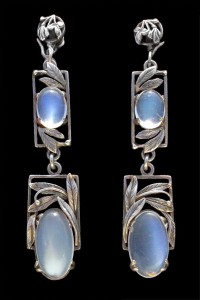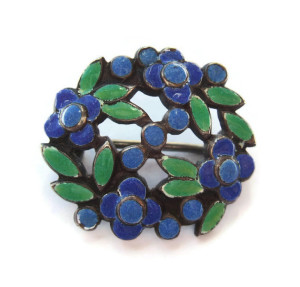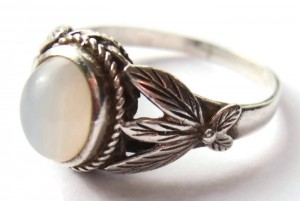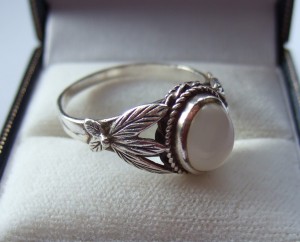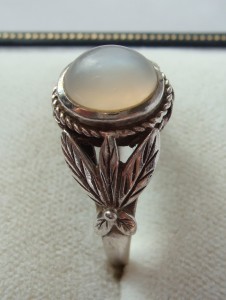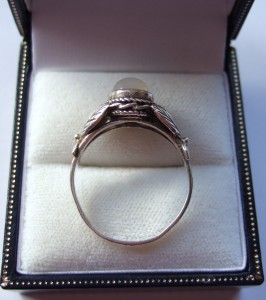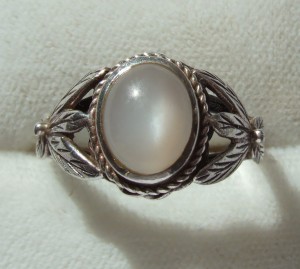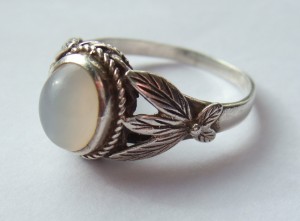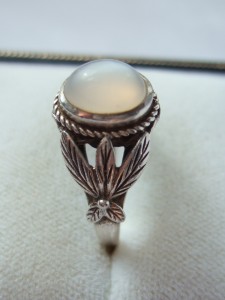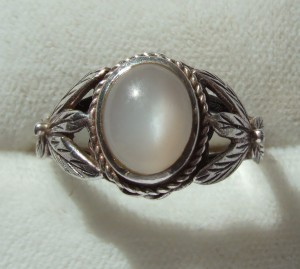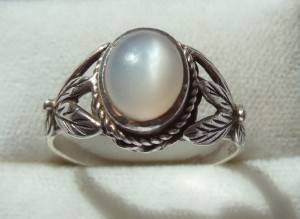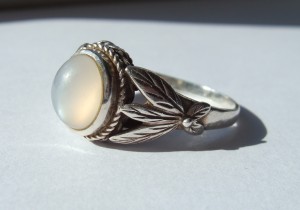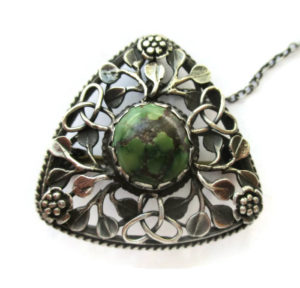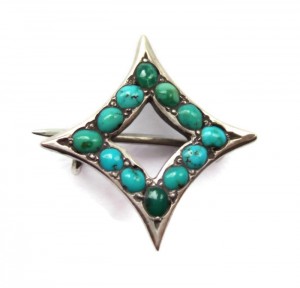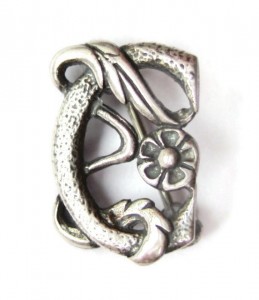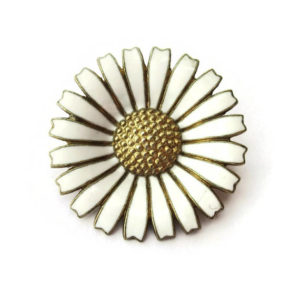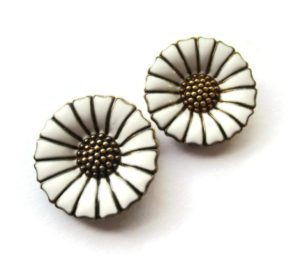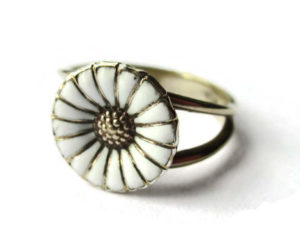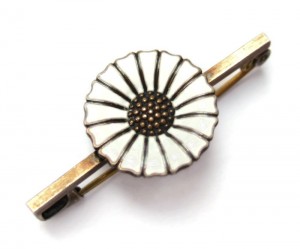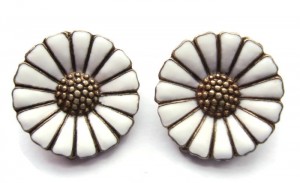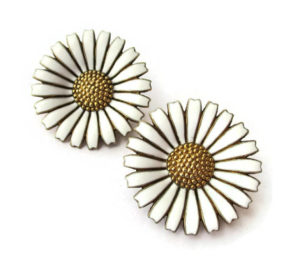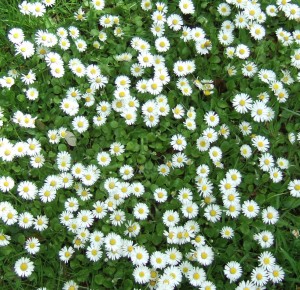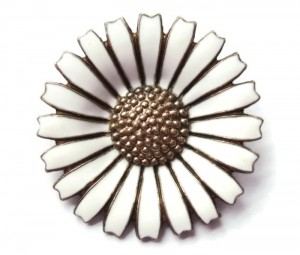Bernard Instone (1891—1987) is a highly regarded and very collectable jeweller, designer and silversmith of the later British Arts and Crafts movement. I am delighted and very fortunate to have a rare Bernard Instone ring for sale in my Etsy shop.
Instone was born in Kings Norton in Birmingham, and his artistic talent was apparent from a very early age. He was only twelve years old when he won a scholarship to the Birmingham School of Jewellery at Vittoria Street, part of the Birmingham School of Art, where he studied under renowned Arts and Crafts jeweller Arthur Gaskin and learned silversmithing from 1904—1912.
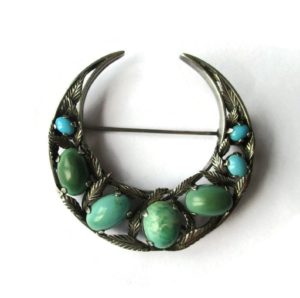
Bernard Instone turquoise crescent brooch, late English Arts and Crafts jewellery. For sale in my Etsy shop, Inglenookery: click on photo for details.
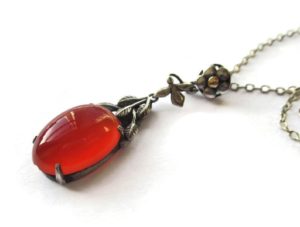
Carnelian, sterling silver and 9 carat gold pendant by Bernard Instone. For sale in my Etsy shop, Inglenookery: click on photo for details.
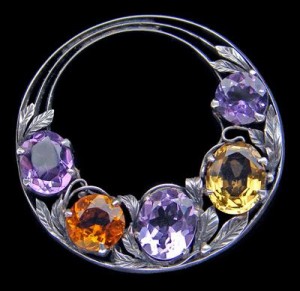
Bernard Instone. Arts and Crafts brooch. Silver, amethyst and citrine. Diameter: 4.1 cm (1.6 in). English, c. 1930. Sold by Tadema Gallery. Note the hand-tooled narrow silver leaves, so characteristic of his work.
After leaving the School, Instone worked for a while for another renowned jeweller and craftsman, John Paul Cooper, in his Westerham studio, and then studied in Berlin under Emil Lettre, Kaiser Wilhelm II’s Court goldsmith. In October 1913 he was back in England, and began part-time teaching at Vittoria Street. As well as making pieces for the Gaskins and Bernard Cuzner and other teachers at the school, he also made his first commissions at this time. In 1920 he set up his own jewellers and silversmith works—Langstone Silver Works—in Digbeth in Birmingham. The company worked from there until 1954 when it moved to Lode Lane in Solihull.
As well as making his own designs, Instone produced jewellery for other jewellers, such as Sibyl Dunlop: a family website about Instone records “he visited [Dunlop] every Friday at her shop in Kensington, supplying her with made up designs already marked up with the SD mark ready for the retail market and [in the] 1940s Liberty became a customer after 25 years of trying to sell to them.” His two sons came to work in the business, and Instone retired in 1963 to the Cotswolds, where he died in 1987.
Instone was strongly inspired by nature, and floral themes occur in most of his pieces. His jewellery can be roughly divided into two types: that with enamel, and that without.
His finest and showiest pieces belong to the latter category: fantastic brooches, rings, necklaces, bracelets, dress clips and earrings with semi-precious stones and sometimes pearls in intricate silver mounts, often with detailed hand-tooled foliage and scrolls. One of his trademark designs are long, fine handmade silver leaves with hand-tooled veins. His favourite stones to use were citrines and amethysts.
The enamel pieces commonly have a floral theme, with leaves and multicoloured flowers often in sugary pastel colours, all picked out in enamel and sometime embellished with marcasites.
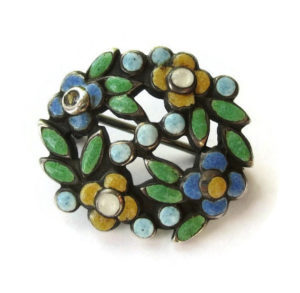
Another Bernard Instone enamel brooch in a different colourway. For sale in my Etsy shop: click on link for details.
Instone sometimes signed his work ‘BI’ and ‘SILVER’, but just as often did not sign his work at all. His style is so distinctive it is easy to spot an Instone once you have got your eye in, though! (I recently saw a fabulous Instone silver and amethyst crescent brooch on eBay which was described by the seller as Victorian. It positively screams Instone! Sadly my pockets weren’t deep enough to buy it.)
Instone’s pieces were very popular during his lifetime and have become increasingly collectable. His work is held in the collections of the Victoria & Albert Museum in London, and is sold by London galleries such as Van Den Bosch and Tadema Gallery: the Instone jewellery in the archive sections of their websites is well worth a look.
I am so happy to be able to offer a rare Bernard Instone moonstone and silver ring in my Etsy shop. A near-identical ring was sold by Tadema Gallery (photos here, scroll down a bit and here, in high resolution). The ring has Instone’s famous handmade silver leaves on either side of the stone. It dates from c. 1930.
Click on the following photos to enlarge:
Okay I went a bit mad with the photos, but Etsy only allows you five and it is so pretty I wanted to show it off properly!
Update February 2015: The ring has now sold. Sorry!
UPDATE July 2016: I briefly had a rare early Bernard Instone brooch for sale in my Etsy shop, but it sold in under 24 hours. Sorry!
